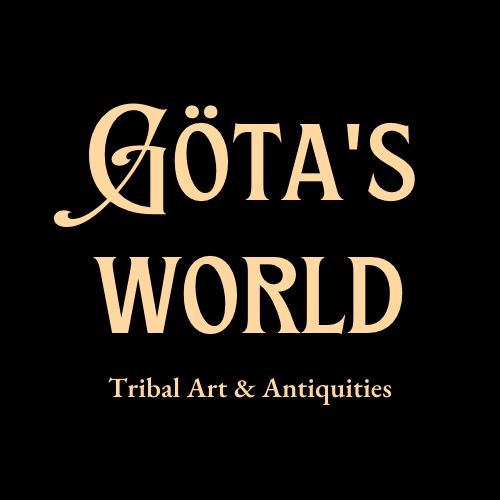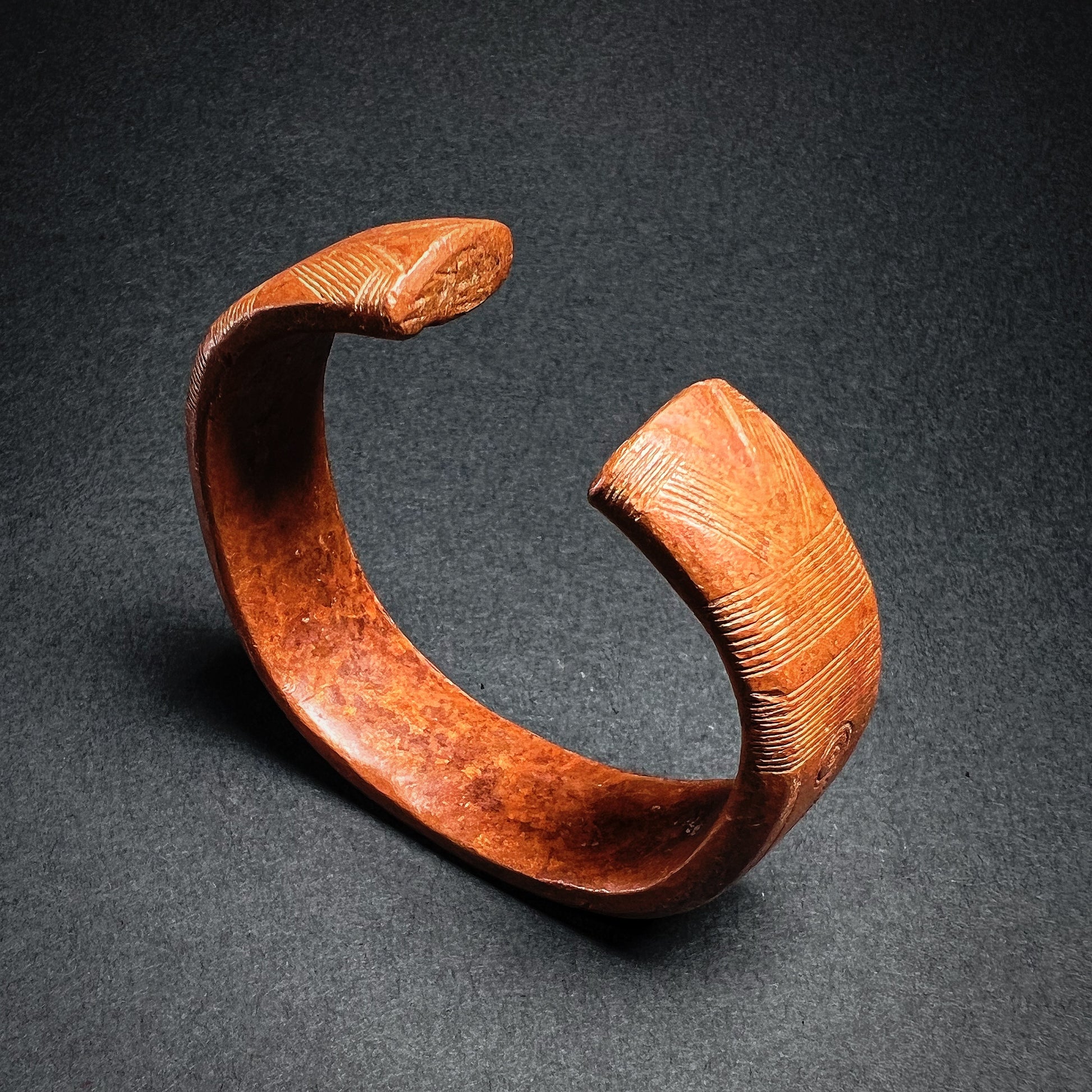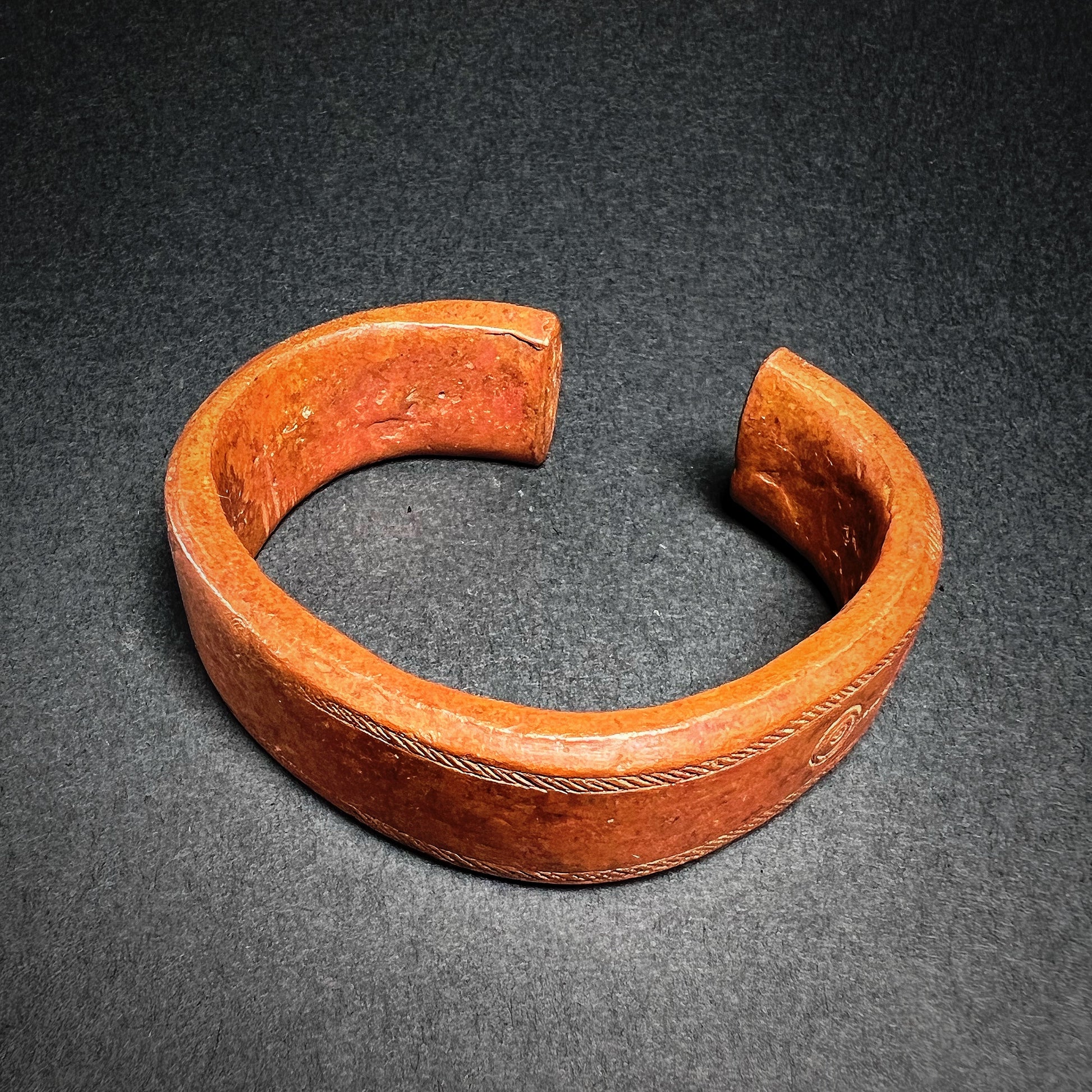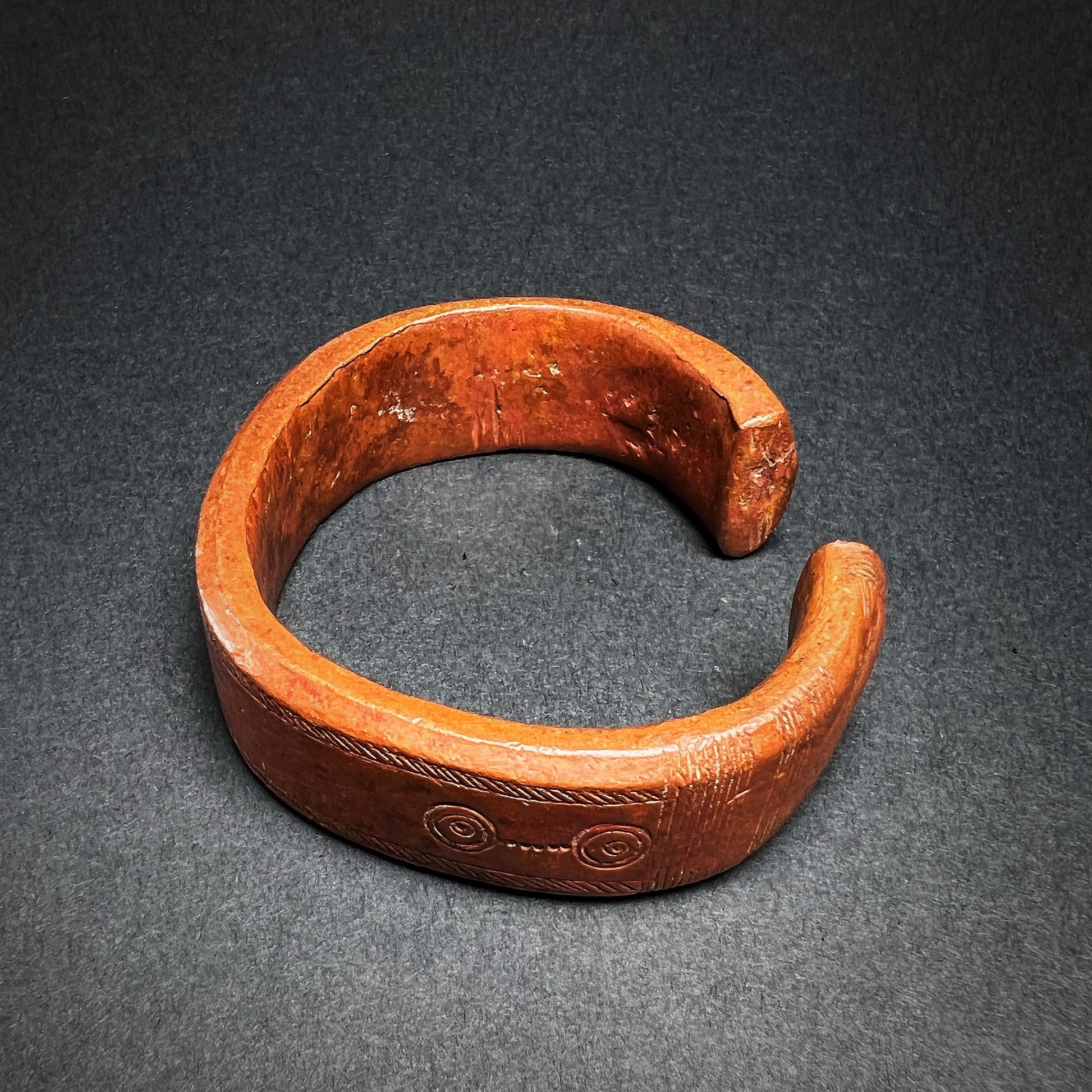Dogon Bronze Bracelet Currency (Manilla)
Dogon Bronze Bracelet Currency (Manilla)
Couldn't load pickup availability
Early to mid-20th century, Dogon people, Mali, West Africa
Elegant cast bronze currency bracelet, created using the lost-wax casting method and adorned with finely incised linear and circular motifs. This beautifully sculpted piece reflects both its function as a form of traditional wealth and the distinctive aesthetic sensibilities of Dogon metalworkers.
The Dogon people inhabit the dramatic landscape of the Bandiagara Escarpment, a vast sandstone plateau stretching across central Mali into Burkina Faso. Their villages—often nestled along cliffs or near springs—are arranged with symbolic intent. A typical settlement consists of roughly 44 houses grouped around the founder’s house (ginna). The overall layout of a Dogon village is designed to evoke the form of a reclining human body, with each structure representing a symbolic part; the most important is the Tógu nà, or “house of words,” which functions as the village’s spiritual and societal “head.”
Manillas, such as this example, were widely used across West Africa as commodity money and symbols of wealth. Typically made of bronze or copper, they appeared in various sizes, shapes, and weights and circulated well before European contact. Their use expanded through trade with the Portuguese Empire, and they remained an important medium of exchange until the late 1940s. While now valued primarily as cultural and artistic objects, manillas continue to carry strong historical resonance, particularly for their role in long-distance trade networks.
The word manilla derives from terms meaning “bracelet” or “hand-ring” in Spanish and Portuguese, ultimately linked to the Latin manus (hand) or monilia (necklace). Most manillas are horseshoe-shaped with facing terminals, and their value varied by region—each group recognizing and naming specific types. Early records from the Calabar region in 1505 describe their use in purchasing goods, where 8–10 manillas could buy a slave and one copper manilla could purchase an elephant’s tusk.
A finely decorated Dogon bronze manilla, rich in history, craftsmanship, and cultural significance—an impressive and collectible example of West African traditional wealth.
Good condition. Wear consistent with age and use. Size approx. 6,8cm x 6,1cm x 1,3cm.
Provenance: Danish private collection.
References and further reading:
The Teach Yourself Guide to Numismatics, C.C. Chamberlain, English Universities Press. 1963, p. 92.
The West African Manilla Currency: Research and Securing of Evidence from 1439-2019, Rolf Denk, Tredition GmbH, Hamburg, 2020.
Primitive Money in its ethnological, historical and economic aspects, Paul Einzig, Eyre & Spottiswoode, London, 1949.
Object biographies, Manilla or Penannular Bracelet Currency, Eric Edwards, Balfour Library, Pitt Rivers Museum, January 29th, 2010. (https://web.prm.ox.ac.uk/rpr/index.php/objectbiographies/78-manilla.html)
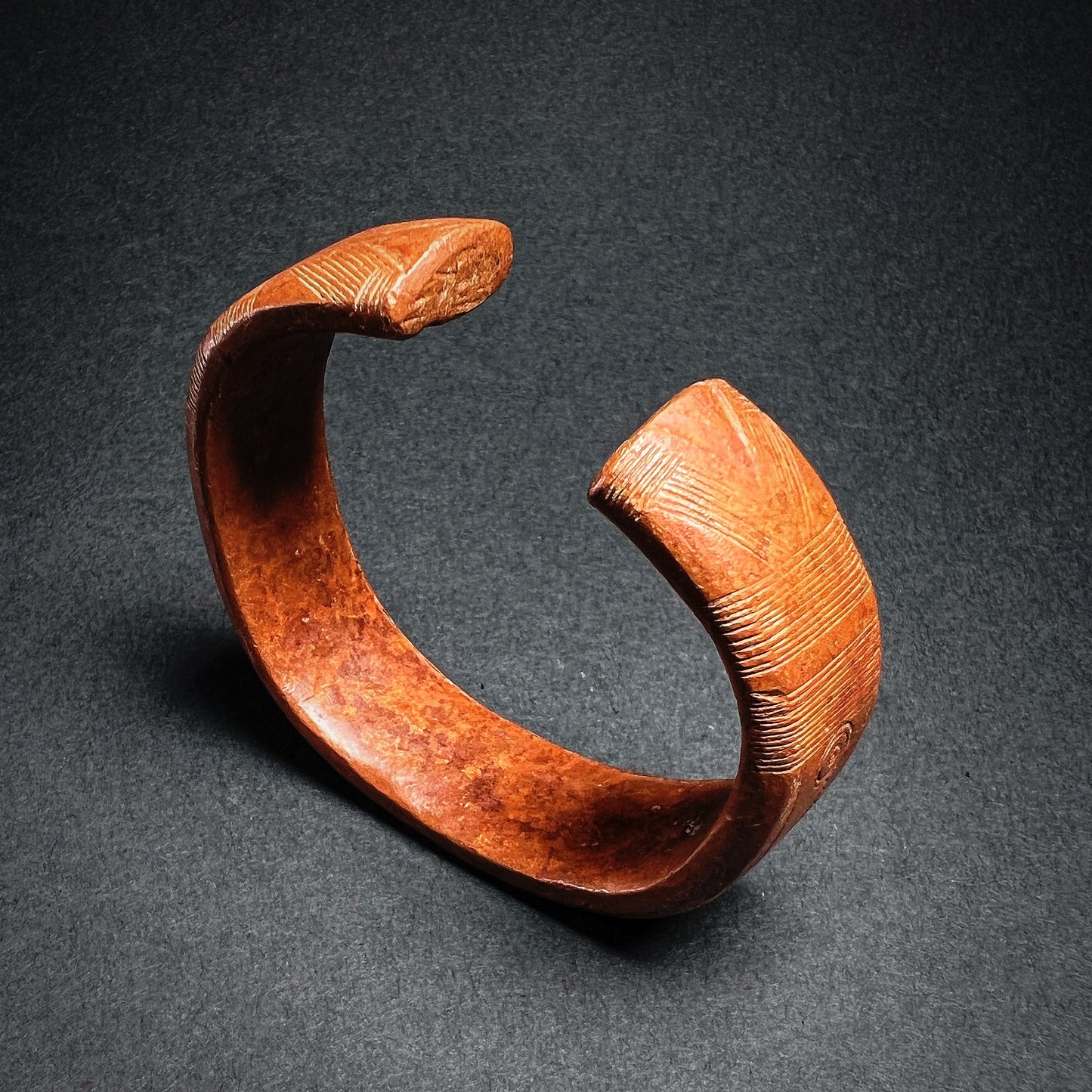

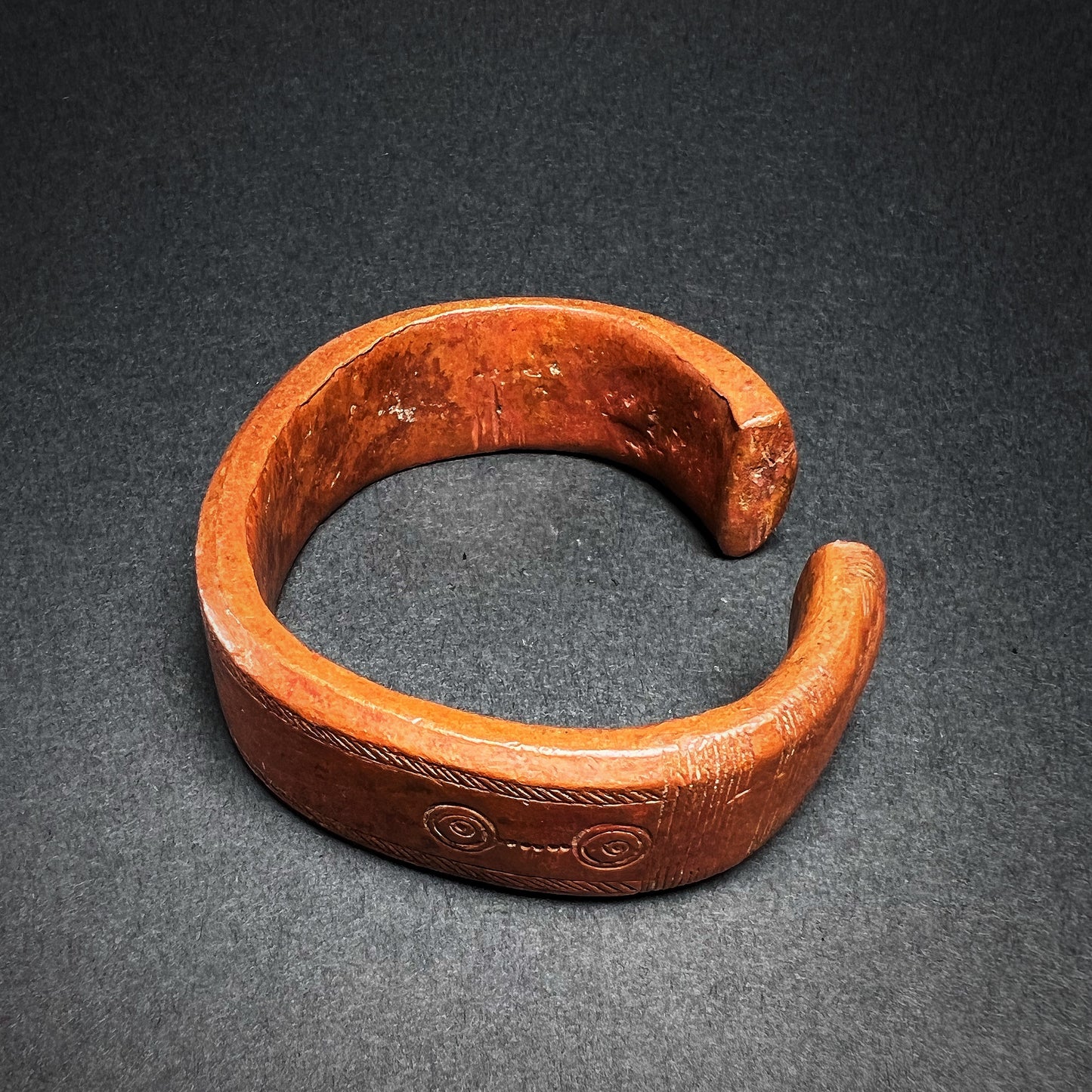
-
Shipping
The shipment will be prepared in the course of 3-5 days and dispatched via Posti Group Oyj or purchased item(s) can be picked up from our shop during the store's opening hours (Tarkk’ampujankatu 4, 00140, Helsinki, Finland). Within the Finland, all items are shipped via Posti Group Oyj unless otherwise requested. We pack the items carefully and mainly in recycled materials because we want to save nature. You will receive the tracking number for your items by e-mail.
-
Returns
Returns and exchange will be accepted within fourteen days (14) of receipt at the purchaser’s cost to include freight and packaging. Items must be returned in the same condition as when they were shipped, and will not be accepted if damaged or altered in any way. Please inform us via email (info@gotanmaailma.fi) or by calling +358408408352 before sending. We do not accept returns more than 14 days after delivery.
